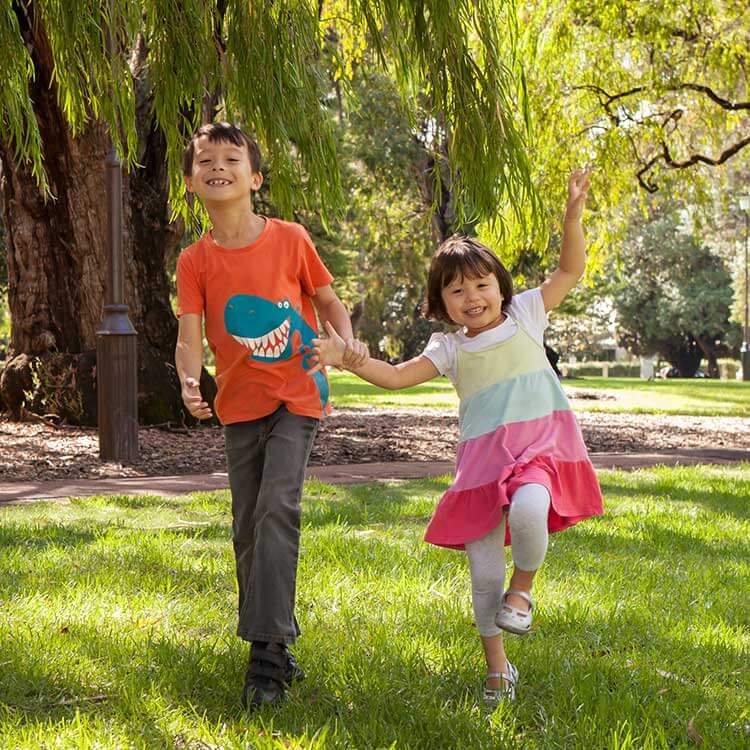Search
Research
REACH: study protocol of a randomised trial of rehabilitation very early in congenital hemiplegiaCongenital hemiplegia is the most common form of cerebral palsy (CP). Children with unilateral CP show signs of upper limb asymmetry by 8 months corrected age (ca) but are frequently not referred to therapy until after 12 months ca. This study compares the efficacy of infant-friendly modified constraint-induced movement therapy (Baby mCIMT) to infant friendly bimanual therapy (Baby BIM) on upper limb, cognitive and neuroplasticity outcomes in a multisite randomised comparison trial.
Research
Antibiotics for the treatment of lower respiratory tract infections in children with neurodisability: Systematic reviewDetermine the optimal antibiotic choice for lower respiratory tract infection in children with neurodisability.
Research
Outcomes following intensive day rehabilitation for young people in Western AustraliaIntensive rehabilitation aims to improve and maintain functioning in young people who experience disability due to illness or injury. Day rehabilitation may have advantages for families and healthcare systems over inpatient models of rehabilitation.
Research
Profiling the Longitudinal Development of Babbling in Infants with Cerebral Palsy: Validation of the Infant Monitor of Vocal Production (IMP) Using the Stark Assessment of Early Vocal Development-Revised (SAEVD-R)We compared early vocal development in children "at risk" for cerebral palsy (CP) with typically developing (TD) infants aged 6 to 15 months using the SAEVD-R, investigating potential pre-linguistic markers of communication impairment. Additionally, we sought to examine the agreement between the SAEVD-R and IMP, which uses parent report, in identifying departure from typical vocal development in at-risk infants.

Research
Diabetes, Metabolism and Clinical SciencesListed are all The Kids Research Institute Australia research teams involved in our Diabetes and Obesity Program. This program sits under the Chronic and Severe Diseases research theme.
Research
Implementation of an Early Communication Intervention for Young Children with Cerebral Palsy Using Single-Subject Research DesignThe implementation of an intervention protocol aimed at increasing vocal complexity in three pre-linguistic children with cerebral palsy (two males, starting age 15 months, and one female, starting age 16 months) was evaluated utilising a repeated ABA case series design. The study progressed until the children were 36 months of age. Weekly probes with trained and untrained items were administered across each of three intervention blocks.
Research
Early childhood educator outcomes from online professional development for physical literacy: A randomised controlled trialEarly childhood is recognised as a critical window of opportunity for physical literacy development, however early childhood educators typically lack the training required to effectively provide appropriate physical literacy opportunities for children.
Research
Does somatosensory discrimination therapy alter sensorimotor upper limb function differently compared to motor therapy in children and adolescents with unilateral cerebral palsy: study protocol for a randomized controlled trialBesides motor impairments, up to 90% of the children and adolescents with unilateral cerebral palsy (uCP) present with somatosensory impairments in the upper limb. As somatosensory information is of utmost importance for coordinated movements and motor learning, somatosensory impairments can further compromise the effective use of the impaired upper limb in daily life activities.
Research
Adaptations to scale-up an early childhood education and care physical activity intervention for real-world availability — Play ActiveAdaptations for scale-up are ubiquitous but are rarely described in detail. Adaptations may be a key reason for the "scale-up penalty" which is when there is a reduction in intervention effect size following scale-up. The Play Active intervention consists of a physical activity policy for early childhood education and care (ECEC) services, with accompanying implementation support strategies.
Research
The Use of Serious Gaming to Improve Sensorimotor Function and Motivation in People with Cerebral Palsy: A Systematic ReviewThe aim of this systematic review was to review the evidence for serious gaming interventions in improving sensorimotor function in children and adults with cerebral palsy (CP). Seven databases were searched with terms related to serious gaming and CP.
